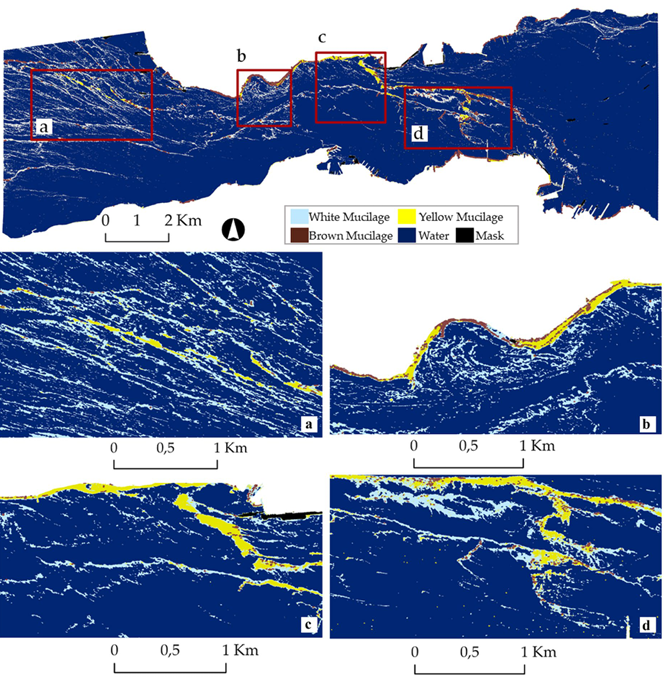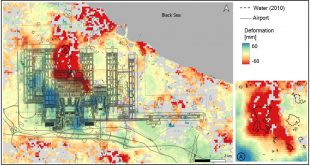Environmental Monitoring and Assessment volume 194, Article number: 585 (2022)
Detection of mucilage phenomenon in the Sea of Marmara by using multi‑scale satellite data
Aylin Tuzcu Kokal, Nazlı Olgun, Nebiye Musaoğlu
Abstract: Marine mucilage outbreaks occurred in the Sea of Marmara in 2021 which severely affected the marine ecosystem. The thick mucilage blankets with different colors became a public concern due to the toxicity potential related to pathogens that accumulate in prolonged presence of mucilage. The mucilage-covered areas in the Sea of Marmara detected by remote sensing data acquired in 2021 were previously reported. However, the areal extents and spectral characteristics of the different colored mucilage types remain unknown. This study presents the spectral characteristics of different types of mucilage in the İzmit Bay in the Sea of Marmara by using medium- (Sentinel-2) and high-spatial resolution (Worldview-3) satellite images. Also, the sea surface temperatures (SST) were studied in relation with the mucilage formation from January 2015 to August 2021 by using NOAA data. Two multispectral satellite sensors Sentinel-2 and Worldview-3 were studied for their potential for mucilage mapping and characterization in the sub-region İzmit Bay. Support vector machine (SVM) classifier was used to detect three different types of mucilage with distinguishable spectral differences in infrared region ranging from 725 to 950 nm. Three different types of mucilage were characterized based on color and texture including (a) the white mucilage aggregates with dispersed patterns which are likely freshly formed, (b) the yellow mucilage accumulations in the coasts that are wind/current transported, and (c) the brown mucilage accumulations that are probably the most-aged. Our results showed that brown mucilage and white mucilage showed similar reflectance values between 425 and 545 nm region, while yellow mucilage showed higher and more distinctive spectral reflectance than white and brown mucilages. The NOAA data showed that average surface water temperature has been increased over the years from 2015 (16.1 °C) to 2021 (17.6 °C). This increase trend in SSTs points out a likely relation with the mucilage formation and hence may suggest a potential of repeating mucilage events in the near future. This study provides a practical methodology for monitoring, classification, and efficient site selection for mucilage cleaning areas in the Sea of Marmara.

Available Online: https://link.springer.com/article/10.1007/s10661-022-10267-6
 UHUZAM İTÜ – Uydu Haberleşme ve Uzaktan Algılama UYG-AR Merkezi
UHUZAM İTÜ – Uydu Haberleşme ve Uzaktan Algılama UYG-AR Merkezi 